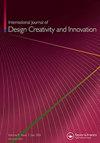Concept evaluation dilemma: Presentation effect on product concept evaluation in the new product development (NPD) process
IF 2.5
Q4 ENGINEERING, MANUFACTURING
International Journal of Design Creativity and Innovation
Pub Date : 2022-11-22
DOI:10.1080/21650349.2022.2146002
引用次数: 0
Abstract
ABSTRACT New Product Design (NPD) process involves multiple phases in which a designer or an engineer shares their idea through verbal and visual presentation. Specifically, during the early concept selection phase, designers often pitch their ideas to peers, investors, and consumers to communicate their developing ideas. During this process, the audiences’ perception of the concept can be influenced by how it was presented. This article examines a) if the presence of visual aids can influence the concept evaluation, b) if the verbal presentation quality can affect how the concept value is perceived, and c) if product design experts can see the value of a concept beyond how it was presented. The results showed that whether visual or verbal, presentation quality can affect how the audience evaluates the concept that is being presented. In addition, contrary to what was expected, it was found that the design experts were more influenced by the presentation quality than the non-experts.概念评价困境:新产品开发过程中产品概念评价的呈现效应
摘要新产品设计(NPD)过程涉及多个阶段,设计师或工程师通过口头和视觉展示分享他们的想法。具体来说,在早期的概念选择阶段,设计师经常向同行、投资者和消费者推销他们的想法,以交流他们的发展想法。在这个过程中,观众对概念的感知可能会受到其呈现方式的影响。本文考察了a)视觉辅助工具的存在是否会影响概念评估,b)口头呈现质量是否会影响如何感知概念价值,以及c)产品设计专家是否能看到概念的价值,而不仅仅是它是如何呈现的。结果表明,无论是视觉还是语言,呈现质量都会影响观众对所呈现概念的评价。此外,与预期相反,研究发现,设计专家比非专家更容易受到演示质量的影响。
本文章由计算机程序翻译,如有差异,请以英文原文为准。
求助全文
约1分钟内获得全文
求助全文
来源期刊

International Journal of Design Creativity and Innovation
ENGINEERING, MANUFACTURING-
CiteScore
3.80
自引率
27.80%
发文量
15
期刊介绍:
The International Journal of Design Creativity and Innovation is an international publication that provides a forum for discussing the nature and potential of creativity and innovation in design from both theoretical and practical perspectives. Design creativity and innovation is truly an interdisciplinary academic research field that will interest and stimulate researchers of engineering design, industrial design, architecture, art, and similar areas. The journal aims to not only promote existing research disciplines but also pioneer a new one that lies in the intermediate area between the domains of systems engineering, information technology, computer science, social science, artificial intelligence, cognitive science, psychology, philosophy, linguistics, and related fields. The journal covers, but is not restricted to, the following topics: ·Theories on Design Creativity and Innovation ·Cognition of Design Creativity ·Innovative Process ·Inventive Process ·Analogical Reasoning for Design Creativity and Innovation ·Design Synthesis ·Method and Tools for Design Creativity and Innovation ·Representation of Design Creativity and Innovation ·Education for Design Creativity and Innovation ·Concept Generation and Inspiration.
 求助内容:
求助内容: 应助结果提醒方式:
应助结果提醒方式:


